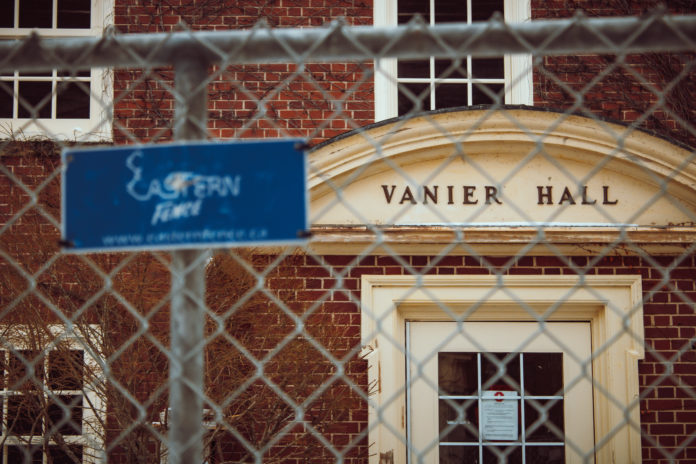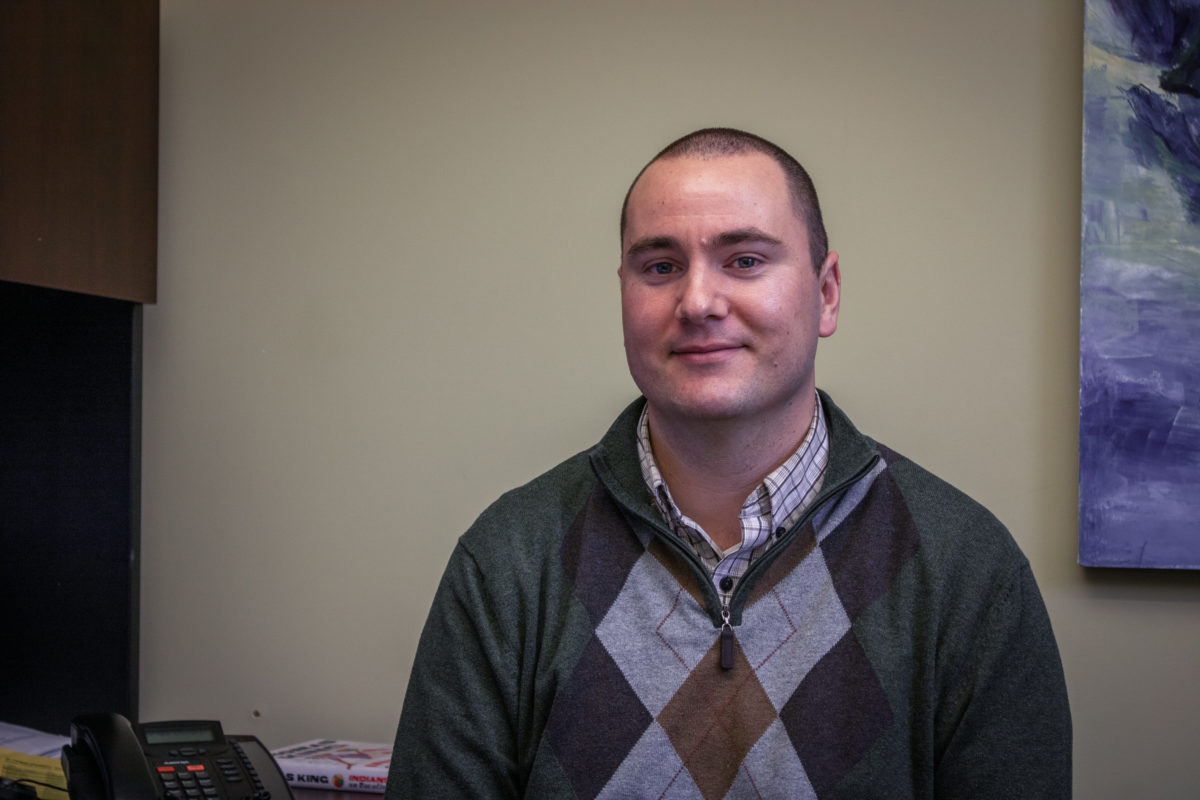

St. Thomas University’s Vanier Hall residence will open its doors in August after 15 months of renovations.
Philip Cliff, director of facilities, has been at the forefront of the operation. He said the building will look similar to Harrington Hall, which was also renovated during a 15-month period between 2016 and 2017.
“It will look very refreshed compared to what it was,” he said.
Jeffrey Carleton, associate vice-president of communications, said STU spent $7.5 million to renovate Vanier, more than what Harrington cost.
Carleton said the costs are higher than Harrington’s because construction costs in society have increased overall. He said it’s too soon to say how much residence fees will be for next year because there are a lot of factors at play, such as finishing the renovations and the ongoing global pandemic.
Still, he said the university will take into consideration what the marketplace indicates is sustainable when setting residence fees.
Carleton said the objective is to finish the project in time for the next academic year but it’s too soon to say how it’ll be utilized.
“We’re consolidating our residence life to campus and so there are a lot of benefits for students,” he said.
Cliff said a new stairwell, which will be finished in May, is being built in the corner facing Margaret Norrie McCain Hall. It is being built because the basement area of the building needed an exit and it was required by code, he said.
The first floor will have six barrier-free rooms, which means they are wheelchair accessible. Harrington Hall also has six barrier-free rooms.
Cliff said residence room furniture was tendered and old furniture was donated to non-profit groups. The new furniture will be delivered in July.
Cliff said contractors are following COVID-19 rules and requirements during the renovations, including screening processes, signing in and wearing masks.
Holy Cross to be an all-female residence
Vanier Hall, which used to be an all-female residence, will now be a mixed-gender residence. Holy Cross House will become STU’s all-female residence.
Brock Richardson, director of student services, said there was still a need for an all-female residence, but the demand was lower compared to previous years.
He said STU did a survey around two years ago, before renovations started, asking if residents wanted an all-female housing option.
They found the option was important to some people.
“Whether it’s people who just want to be safer, not being around men, or [they have] religious reasons, or family reasons, or cultural reasons, or whatever – there are people who do feel strongly about having that option,” he said.
Though Vanier Hall is the biggest residence on campus with 190 beds, the demand to live in it has been low in recent years, said Richardson.

Many of the students who ended up living in Vanier initially wanted to live in Harrington, but they wanted a single room, he said. It was easier to get one in Vanier because of low demand, but that didn’t necessarily mean those students wanted to live in an all-female residence.
He said Holy Cross House, with 68 beds, meets student demand for an all-female residence.
“I think it’s a way of protecting that option and keeping that option, but recognizing that that option of having an all-female residence isn’t necessarily what most people want,” he said.
Richardson said that Residence Life wants to create strong communities by giving students the option to choose where to live rather than placing them somewhere they didn’t choose because of room capacity.
Residence will cater to students’ different comfort levels next year. Aside from having an all-female residence option in Holy Cross, Harrington will offer gender-specific wings for students who still want to have a mixed-gender housing experience but want to have gender-segregated washrooms.
Vanier Hall, on the other hand, will have mixed-gender wings with gender-neutral shared washrooms which have been renovated to provide more privacy.
“We’re really looking at a more gender-inclusive community,” said Richardson.
Goodbye, Rigby Hall
Richardson said that Rigby Hall won’t be used as a STU residence starting September 2021.
The building, alongside Chatham Hall, is part of the Forest Hill property that STU sold for $4.3 million in July 2018. Since then, STU leased the building back to house students until Vanier was renovated.
Now that renovations will be ready for the fall, the hope is to house students on campus in the upcoming academic year.
Richardson said that the goal is to have students back on campus in September 2021. Still, depending on the COVID-19 vaccine rollout, Residence Life is planning towards different scenarios, from the university being totally open to adopting a hybrid model, amongst others.
Richardson said Residence Life might make final decisions on residence around April or May, when there’s more data and clarity on what the fall semester and vaccine rollout is going to look like.
For now, they are treating residence in the upcoming fall as “normal” and are encouraging incoming and current first-years to apply to residence.
“If April or May comes around and we have to adjust that model a little bit, we can adjust it, that’s not a problem,” he said. “We can scale back or change.”
Richardson also said that residence exists to support the academic mission and they can work with Public Health, which they have before, to make residence as safe as possible while offering a place for students to live.
He said the university is excited about having students back on campus in September and is preparing for that, but they realize that it might not be like that.
“It might be more like half people are on campus in September and then not full until next January,” said Richardson. “Either way, we’ll be ready for that.”
